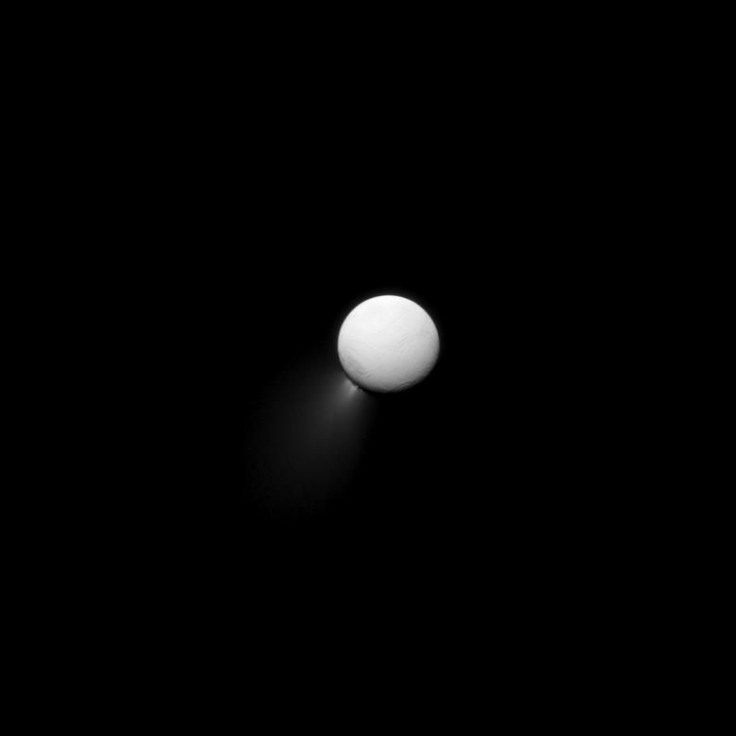NASA's Cassini Enceladus Flyby Searches For Evidence Of Life On Saturn's Moon

Hidden beneath the surface of Saturn's moon Enceladus could be the recipe for life. The moon has been a source of fascination among astronomers because of its activity, organic compounds and a global ocean under its icy surface. NASA's Cassini spacecraft is to make a flyby of Enceladus to gain insight into the ocean's ability to harbor life.
Cassini does not have the tools to find life on Enceladus, but it could use its suite of scientific instruments to understand what's going on within the moon. Enceladus is a young, ocean world with an incredible amount of geologic activity, NASA said. This activity is punctuated by icy plumes from near the moon's south pole. Through several cracks, nicknamed "tiger stripes," Enceladus' underground ocean sprays into space.
Cassini has previously passed above the icy plume, but Wednesday's scheduled pass will put the spacecraft just 30 miles above the south pole. From higher altitudes, Cassini has sniffed organic compounds such as carbon dioxide, carbon monoxide, methane and formaldehyde, Space.com reported.
Now on final approach for the #Enceladus flyby and the deepest-ever dive through the plume. https://t.co/6NVhUOJVRC https://t.co/q5e1l6rMSV
— CassiniSaturn (@CassiniSaturn) October 28, 2015Enceladus' ocean is believed to be salty and pretty basic, with a pH of around 11 to 12, Scientific American reported. Cassini detected a distinct hot patch around the south pole, adding another layer of mystery to what's happening underneath the moon's icy exterior. Wednesday's flyby could help determine how much hydrothermal activity is actually happening on Enceladus.
On Earth, there's plenty of life deep in the ocean around volcanic vents and that same model could apply on Enceladus, NASA noted. Cassini's close approach will also let the spacecraft sample more complex molecules in the icy plume, NASA said.
The flyby also will help clarify the makeup of the icy plumes. They could be jets or curtain eruptions -- occurring as curtain-like eruptions across fractures on its surface rather than individual jets -- which would improve the understanding of how material is traveling from the ocean to the surface. The Cassini flyby would also measure just how much material is being shot out into space.
Months from now, there will be no headlines saying "Cassini Finds Life On Enceladus." Instead, the data collected by Cassini could determine the importance of a proper journey -- complete with a lander -- could be.
© Copyright IBTimes 2024. All rights reserved.






















